


Fun Pre-Writing Activities and Worksheets for Preschoolers

Activities that develop pre-writing skills prepare preschoolers for learning to write alphabet letters.
If you want to give your toddler or preschooler a head start with their writing, you might be tempted to give them a pencil and get them working on their ABCs straight away. However, this approach can lead to frustration for both of you (if this is you, don’t worry – you’re not alone!).
Before they start writing alphabet letters, your preschooler will need to develop certain pre-writing skills that are built upon over time. In this article you’ll find ideas for fun pre-writing activities you can do with your little one at home and online, as well as a selection of free printables and worksheets for skills practice.
Keep reading to discover fun and engaging learning ideas, and don’t miss your FREE downloadable worksheets at the end of the article to support your child's skill development!
What Pre-Writing Skills Do Preschoolers Need?
Just like you need to crawl before you walk and walk before you run, pre-writing skills are the stepping stones that will guide your preschooler down the path to writing success (without getting frustrated).
Think of pre-writing skills like sports training. Your child needs to build physical strength and endurance to comfortably grip a pencil for long periods and develop precision for neat and legible writing. The key to achieving this (without pulling your hair out) is to make the practice fun so your child actually wants to do it!
Children typically begin writing letters by the age of 4 or 5. Before that, they need to develop the following pre-writing skills:
fine motor control
hand-eye coordination
mark making
spatial awareness
letter recognition.
Below you’ll find lots of fun pre-writing activities that will help preschoolers build these important skills.
1. Fine Motor Skills
Preschoolers need to develop the strength of the small muscles in their hands to build endurance and dexterity. The control and coordination of their hands and fingers for precise movements is known as ‘fine motor skills’.
Pre-Writing Activities to Build Fine Motor Skills
Examples of pre-writing activities to build fine motor skills include:
squeezing and manipulating playdough
cutting with child-safe scissors
stringing beads, pasta or cereal
opening clothespins (pegs)
sensory play (squishing and stretching slime, drawing in sand with their fingers)
peeling and placing stickers
picking up small objects with the ‘pincer’ hand movement.
Playing with Playdough to Build Fine Motor Skills
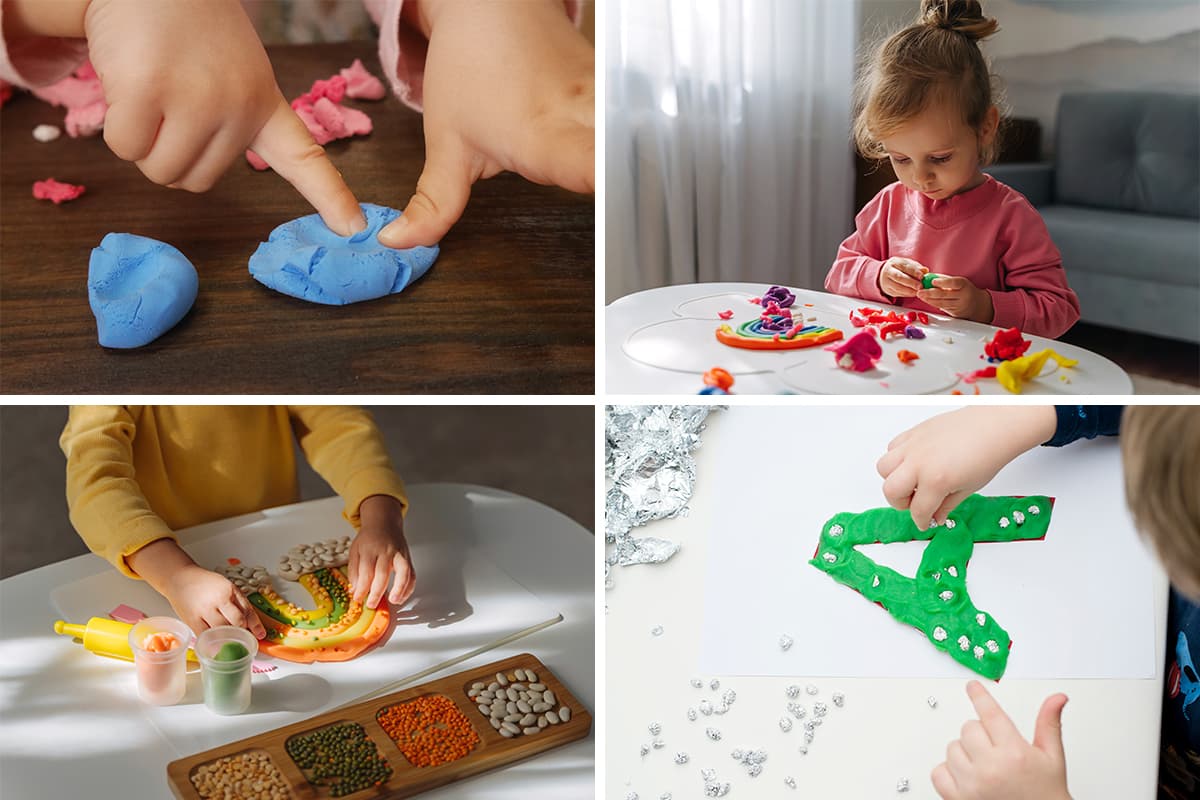
Making shapes with playdough is a fun way for your child to build their fine motor skills. By simply rolling, pulling and shaping the playdough, your preschooler will strengthen the small muscles in their hands. Cookie cutter molds can be helpful tools to get toddlers started.
As their dexterity improves, provide your child with small objects such as beads, pom poms, or seeds to decorate their creations – this will help them develop their ‘pincer’ skills (holding thumb and index finger together) in preparation for holding a pencil.
When your preschooler is ready to start learning letters, download the free printable Alphabet Placemats from Reading Eggs Junior. The placemats include large, printed letters that can be used with playdough to mold letter shapes.
Read our expert tips on how to teach preschoolers to read.
Clothespin Activities
Developing the strength to open a clothespin (peg) is a surprisingly good way to build your child’s fine motor skills and hand muscles. You can get them to peg items to a length of string or have them clip the pegs onto the rim of paper plates marked with letters/everyday pictures, depending on their learning level.
The free printable Alphabet Clip Cards in Reading Eggs Junior are a fun activity to develop fine motor skills with clothespins while building letter recognition and vocabulary skills.
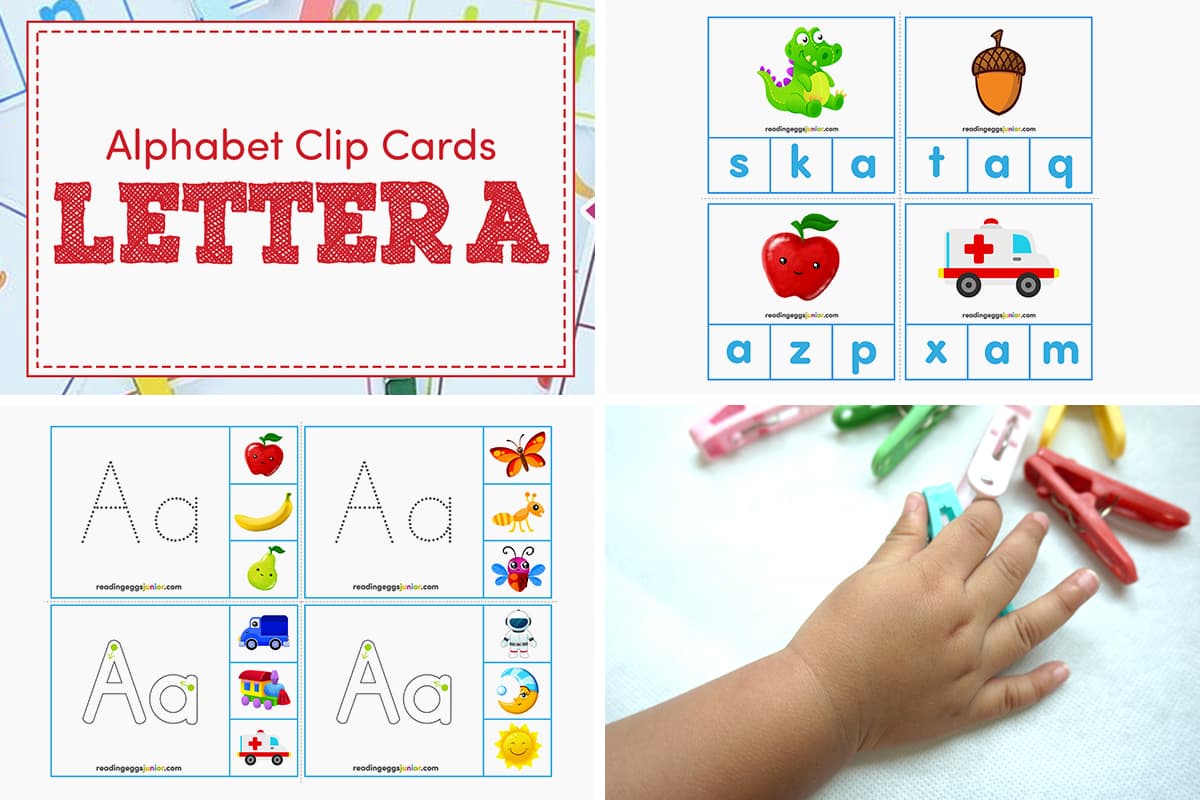
Fun Learning Activities Your Preschooler Can Play Online
Your preschooler can play hundreds of fun online learning activities in Reading Eggs Junior free for 30 days. Suitable for ages 2–4, the online activities include interactive jigsaw puzzles and sorting games to build pre-writing skills, such as hand-eye coordination and fine motor control.
2. Hand-Eye Coordination
Good hand-eye coordination is essential for guiding a pencil smoothly across the page and forming letters correctly.
Pre-Writing Activities to Improve Hand-Eye Coordination
Examples of activities to improve hand-eye coordination include:
catching and throwing balls
jigsaw puzzles
tracing lines and shapes with their finger or a pencil
popping bubbles
dot-to-dot pictures and letters
interactive online games.
Hand-Eye Coordination Games
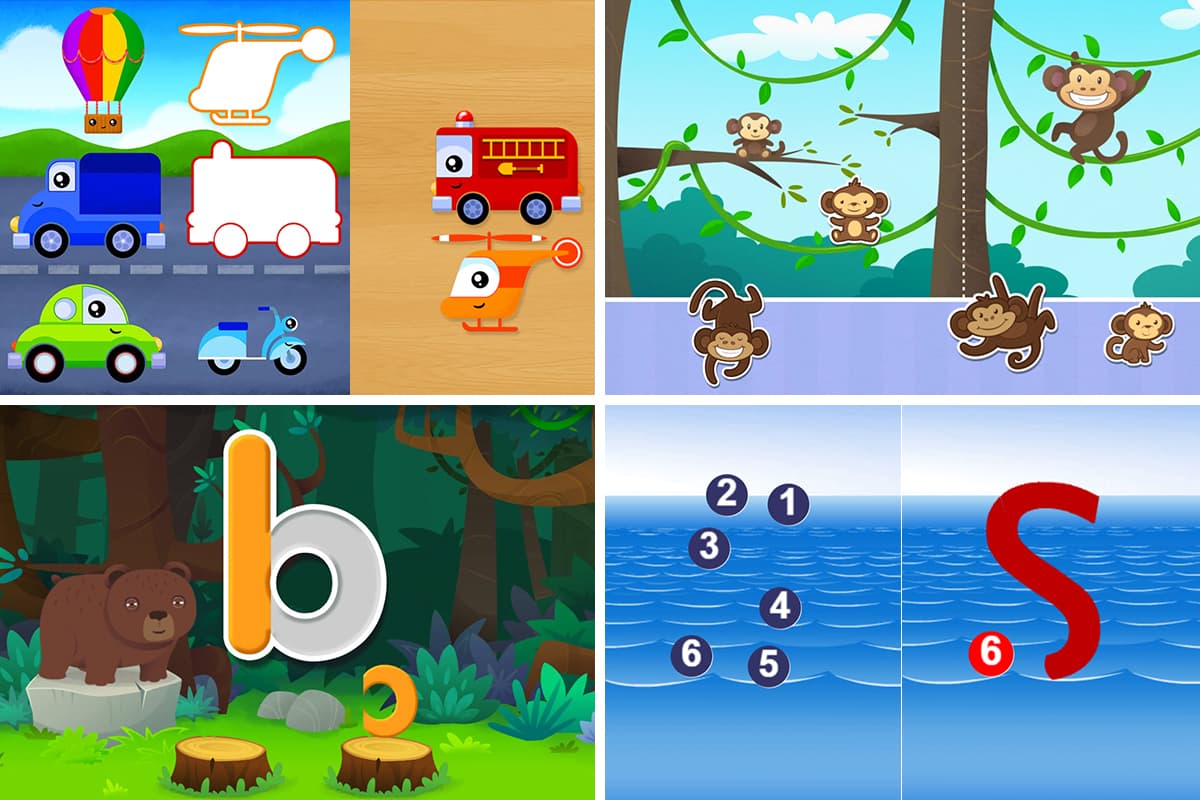
The online pre-writing activities in Reading Eggs Junior help preschoolers build their hand-eye coordination and fine motor skills as they move jigsaw puzzle pieces into place and sort objects by size, shape or colour.
Once your preschooler is ready to start learning to read, they can move onto the alphabet and reading games in Reading Eggs. Dot-to-dot activities are great for teaching early learners how to write letters.
3. Mark Making
Encouraging your child to explore mark making allows them to experiment with lines, shapes and directions. This builds confidence and prepares them for more controlled writing later.
Mark Making Pre-Writing Activities
Mark making activities include:
colouring with chunky chalk
finger painting, scribbling and drawing
decorating with thick dot markers.
As your preschooler’s mark making skills improve, start giving them finer writing tools to work with (crayons, slim markers, pencils).
Arts and Crafts to Build Pre-Writing Skills
As far as pre-writing activities go, arts and crafts can be the messiest but the most fulfilling. Painting, cutting, gluing and drawing with chalk will keep little ones engaged for long stretches of time, nurture their imagination and help them with their pencil grip technique, dexterity and fine motor control. The great thing about arts and crafts is that you can let them have free rein and get creative, or introduce controlled activities like tracing, colouring in or making shapes. Our suggestion is to mix it up and have fun!
Try some of the colourful and creative craft projects in Reading Eggs Junior.
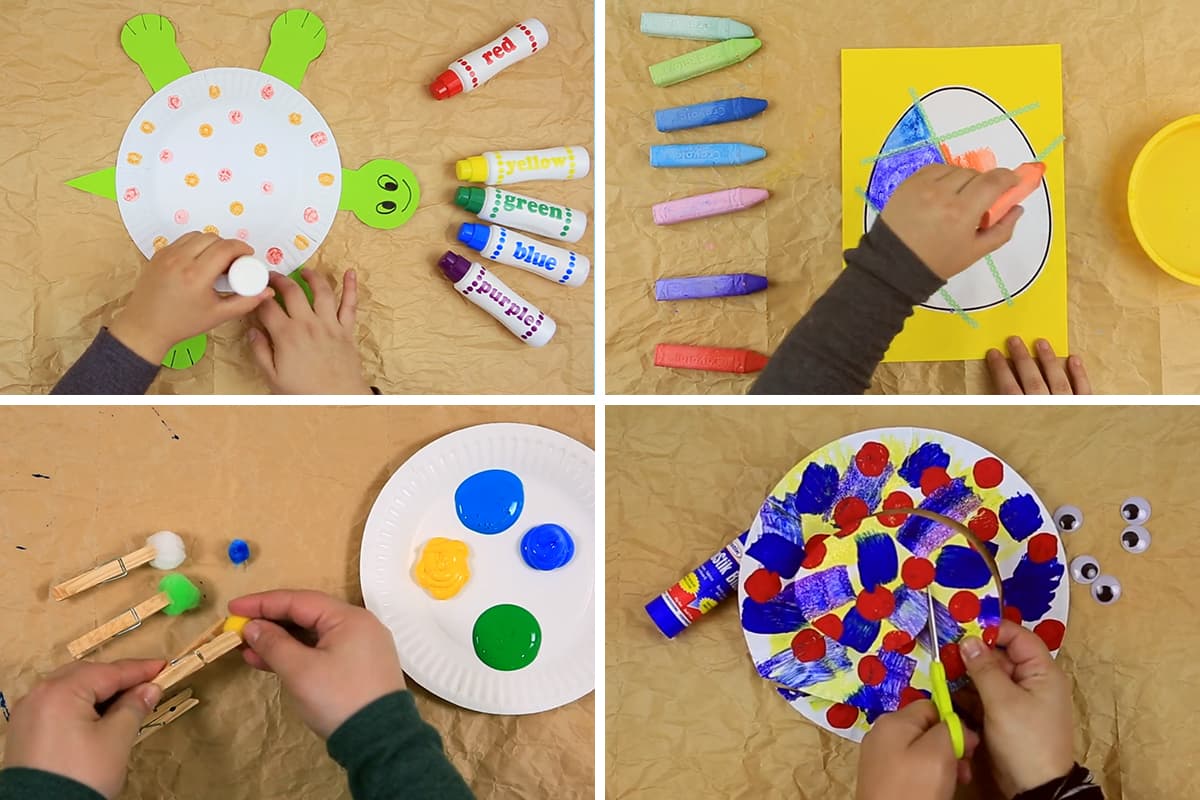
Reading Eggs Junior includes lots of fun and colourful craft videos showing children how to draw and paint with chalk, dot markers and pom poms. Free trial
Correct Pencil Grip
Observe how your preschooler holds their mark making tools and gently guide them to properly grip their markers and pencils with a tripod grasp (holding the pencil with the thumb and index finger using the ‘pincer’ action).

Mark Making with Precision
Once your preschooler has developed the physical strength in their hands and can hold a pencil correctly, it’s time to start working on their precision skills. Mark making activities to develop precision include (but are not limited to):
straight vertical lines
horizontal lines
circles
crosses and “t” shapes
diagonal lines
triangles.
Homemade story books are a wonderful way to encourage your child’s creativity and they also make a delightful keepsake. While they’re building up to writing letters, your preschooler can express their imagination by telling stories through pictures in their books.
Give Your Preschooler a Head Start in Writing
Explore the hundreds of fun learning activities in Reading Eggs Junior, suitable for ages 2–4, to give your preschooler a head start in writing. You’ll also get access to Reading Eggs, the award-winning learn-to-read program for ages 3–7. Start your 30-day free trial today!
4. Spatial Awareness Skills
Preschoolers need to develop visual perception skills and understand the spatial relationships between objects and shapes on a page. Build their spatial vocabulary by teaching them concepts like up, down, left, right, top, bottom, near and far.
Pre-Writing Activities to Develop Spatial Awareness
Pre-writing activities to develop spatial awareness skills include:
building with blocks or Lego
jigsaw puzzles
shape sorting.
5. Letter Recognition Skills
Recognising letters and their shapes is an important part of the pre-writing process. Start slowly by introducing one letter at a time. A handy tip is to begin with the first letter of their name, then the second and so on. Then you can begin teaching your child how to write their name.
Alphabet Flash Cards
Alphabet flash cards make learning the 26 letters of the alphabet a fun experience.
The cards can be used to play games that will help children learn to:
recognise letter shapes
hear letter sounds
match pictures to letter sounds
place letters in alphabetical order
read and spell simple words.
Check out our article for more alphabet games to play with your child.
Line Drawing and Letter Tracing Worksheets for Preschoolers (FREE Downloads)
Line drawing and letter tracing worksheets are an excellent way for your preschooler to develop their pre-writing skills. Dashed and dotted lines guide their hand to form straight lines, draw curves and trace letters.
Reading Eggs and Reading Eggs Junior offer a huge selection of printable worksheets with tracing and colouring activities that are perfect for pre-writing practice. Your child will be able to build their grip technique and endurance with either a pencil or crayon and develop their fine motor skills all while having fun completing the activities.
Download the free printable Alphabet Letter Books containing line drawing and letter tracing worksheets for all 26 letters of the alphabet.
The free printable Alphabet Maze booklet is another fun way to build your preschooler’s letter recognition skills.
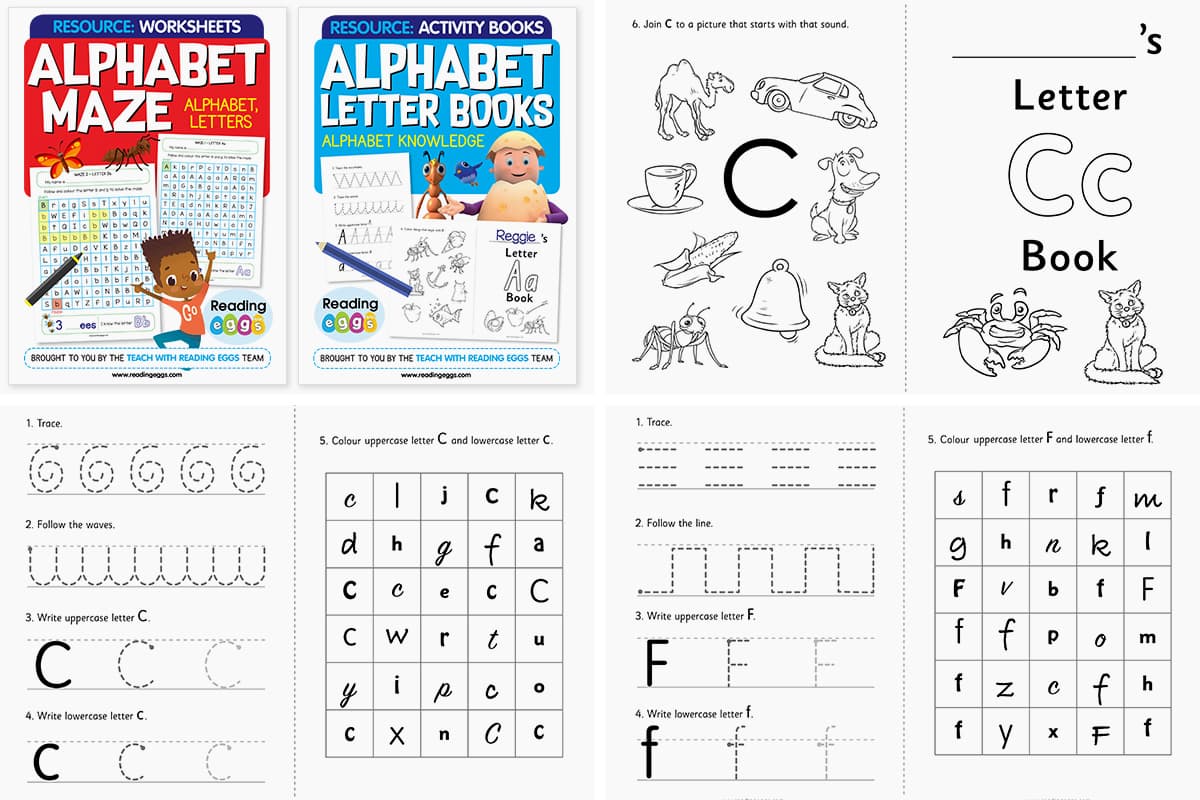
Watch the video below for more tips on how to teach your child to write the alphabet or check out our article with handwriting tips for kids.
Give Your Preschooler a Head Start in Writing
Explore the hundreds of fun learning activities in Reading Eggs Junior, suitable for ages 2–4, to give your preschooler a head start in writing. You’ll also get access to Reading Eggs, the award-winning learn-to-read program for ages 3–7. Start your 30-day free trial today!






